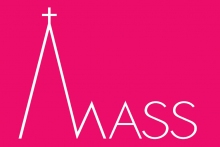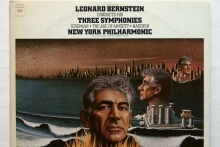In 1976, Leonard Bernstein and lyricist Alan Jay Lerner collaborated on the musical "1600 Pennsylvania Avenue", which ran for only seven performances on Broadway at the Mark Hellinger Theatre. The music has been reworked into an orchestral suite, a choral work, "A White House Cantata", and various…
Works
-
 "Few composers capture their time and become the iconic voice of their age. Leonard Bernstein found his "voice" in the early 1940s and projected the sound of urban and urbane America from the period of World War II to the anti-war movements of the 1970s and the restoration of freedom in Europe, with the fall of the Berlin Wall and Soviet communism."
"Few composers capture their time and become the iconic voice of their age. Leonard Bernstein found his "voice" in the early 1940s and projected the sound of urban and urbane America from the period of World War II to the anti-war movements of the 1970s and the restoration of freedom in Europe, with the fall of the Berlin Wall and Soviet communism."
-Conductor John Mauceri
(Photo by Al Ravenna, 1955; via Wikimedia Commons)
Questions about programming, performing, and licensing?

A suite of 11 Anniversaries arranged for orchestra by Garth Edwin Sunderland, each one written for a different person in Bernstein’s life.

The comic operetta, Candide, captures Voltaire's depiction of the cynicism of society expressed through the protangonist's education in optimism, banishment from his beloved Cunegonde, travels, trials, and disillusionment with humanity, before ending on a hopeful tone in "Make Our Garden Grow".

One of Bernstein’s last works, the Concerto for Orchestra was written for the 50th anniversary of the founding of the Israel Philharmonic Orchestra.

Leonard Bernstein composed Divertimento for the Boston Symphony Orchestra's centenary, dedicating the piece, "With affection to the Boston Symphony Orchestra in celebration of its First Centenary." Having served as assistant to BSO conductor Serge Koussevitzky at the Berkshire Music Center, Bernst…

Dybbuk, a ballet by Leonard Bernstein and Jerome Robbins, is a fascinating exploration of Jewish mysticism, full of ghostly spirits and black magic. The score by Bernstein is among his most atonal and serialist compositions.

Leonard Bernstein and Jerome Robbins first collaborated in the mid-1940s on the instantly popular ballet Fancy Free, commissioned by American Ballet Theatre. First performed on April 18, 1944, this work, a piece about three sailors on shore-leave in New York City, served as inspiration for their n…

Bernstein dedicated Halil "to the spirit of Yadin [Tenenbaum] and his fallen brothers.” Tanenbaum was an Israeli flute student killed in his tank close to the Suez Canal during the 1973 war. The title "Halil" is the Hebrew word for flute.

The eclecticism of MASS's music reflects the multifaceted nature of Bernstein's career, with blues, rock, gospel, folk, Broadway and jazz idioms appearing side by side with 12-tone serialism, symphonic marches, solemn hymns, Middle Eastern dances, orchestral meditations, and lush chorales, all un…

Premiered by Rostropovich at the Kennedy Center in D.C. in 1977, the Three Meditations from MASS for cello and orchestra are derived from Bernstein's stage production which encompasses everything from humble introspection to ceremonial dance.

On the Town has been a classic since its original Broadway run in 1944, the show highlights the fleeting encounters and visceral energy of youth as three young sailors find love and excitement while on leave in New York City during one 24-hour period.

Leonard Bernstein's score for the Academy Award-winning On The Waterfront debuted when the film opened in New York City on July 28, 1954. His score for the film received wide popular and critical acclaim, and On The Waterfront won 8 Academy Awards, including Best Picture, Best Leading Actor (Marlo…

Candide (1956) is operetta in the vein of Offenbach and Gilbert and Sullivan, with all the wit, élan, and sophistication that is associated with that genre, and it is immediately apparent in the Overture—in sonata form, no less.

Leonard Bernstein’s SLAVA! A Political Overture was premiered on October 11, 1977 as a part of Mstislav Rostropovich's inaugural concerts as music director of the National Symphony Orchestra. Dedicated to Rostropovich, the piece concludes with the musicians shouting "Slava!"

Why are these dances called symphonic? Simply because the dance music, even in its original format, is symphonically conceived. Relatively few thematic ideas, combined with each other and metamorphosed into completely new shapes, are all that are necessary to meet the varying dramatic requirements…

With his first symphony, Bernstein not only established himself as a major American symphonist, he began a musical and dramatic exploration of a theme that would continue to inspire many of his major works throughout his career. "The work I have been writing all my life," he said in 1977, "is abou…
Bernstein's Symphony No. 2: The Age of Anxiety for piano and orchestra was commissioned by his long-time mentor Serge Koussevitzky in 1949. Based on an eponymous poem by W.H. Auden, the movements follow the narrative in which four lonely strangers who meet in a wartime New York bar and spend the e…

In his Kaddish Symphony, Leonard Bernstein exploits the dualistic overtones of the prayer: its popular connotation as a kind of requiem, and its celebration of life ( i.e. creation). He does this both in his speaker's text and in his music.


